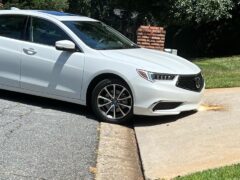Curb Ramp & Homeowners Association Compliance
If you own a home, chances are you’ve had to comply with your neighborhood’s Homeowners Association. These agencies are responsible for the implementation and maintenance of appearance standards. Whatever your feelings are about homeowners associations, they represent a necessary consideration when deciding on home improvements. So one consideration with any new addition to home, yard, or driveway is: “Will this comply with our Homeowners Association’s/city district’s rules and regulations?”
Local rules and regulations with regard to driveway curb entrances can differ from one neighborhood to the next. Some local ordinances require the installation of a drainage channel using a pipe or similar accessory to allow for water flow underneath. Additionally, some may require the driveway ramp to be removable (see article) using a substrate. From our experience, meeting these two basic requirements will satisfy most HOA’s concerns. Consult your local Homeowners’ Association rules and regulations prior to installation to confirm compliance. We assume no liability for violations of local regulations.
Tips from past customers:
- If you receive a notice about your ramp, request the specifics on the relevant rule or regulation. Your curb may fall outside of its jurisdiction.
- Find out who maintains the road. If the road was dedicated to the city for maintenance after the developer sold out, it may be considered “right of way” and regulations may not be in place to specifically prohibit curb fillers.
- Ask them to pay to have the curb lowered to accommodate your vehicle stating they are not in compliance due to angles, height etc.
- Give them bids for the price to do the work and recommend a schedule that works.
- If your HOA prohibits custom curb ramps and are unwilling to work together on a compromise, explain your planned installation at a public forum and invite sympathetic neighbors to attend. With a little effort, a compromise can be reached.



















